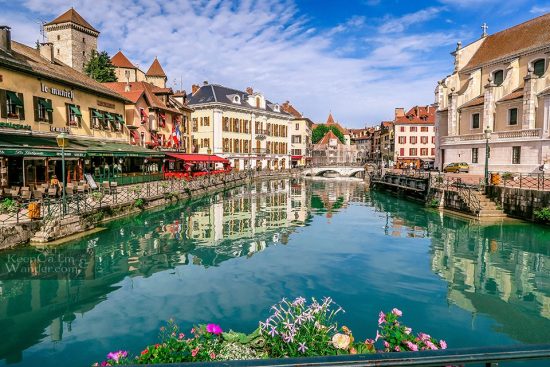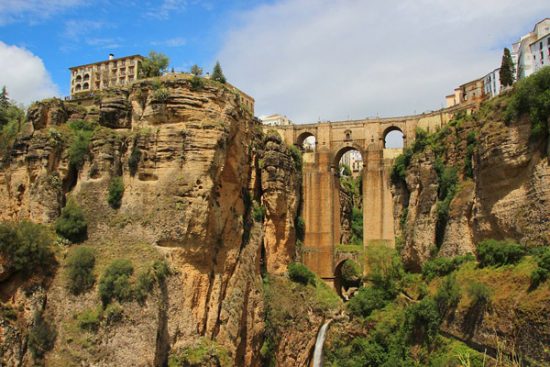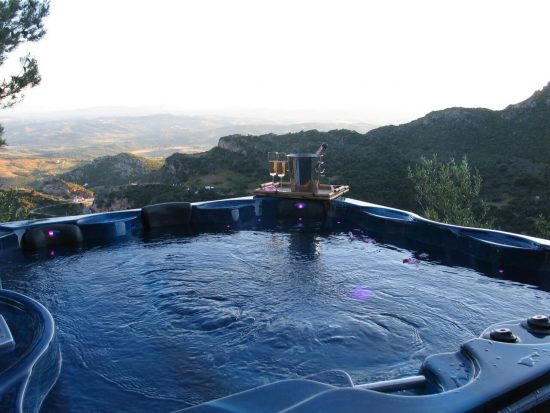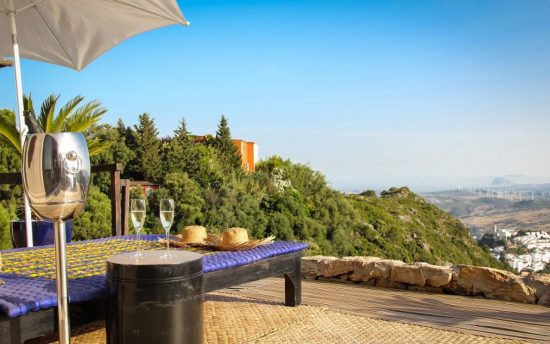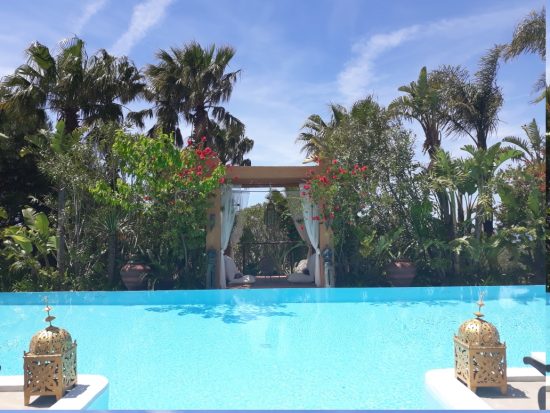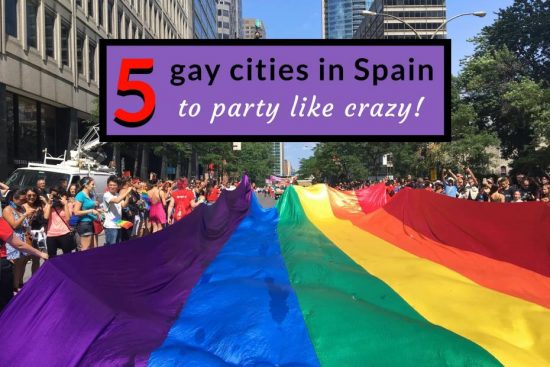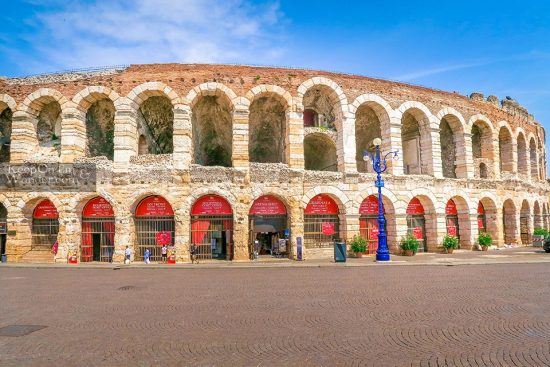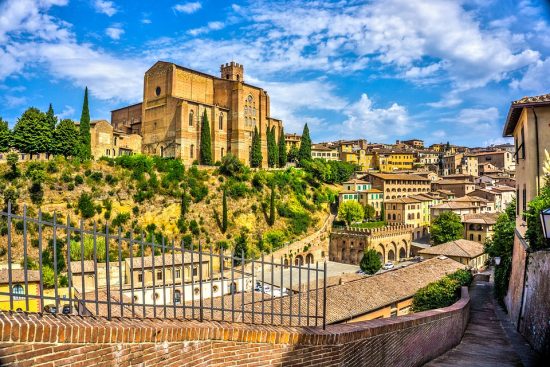
Good morning, everyone,
As I prepare to return to Italy, I am reminiscing today about another of my favorite cities, Siena.
Siena is one of the Tuscan hill towns, situated just a short drive southeast of Florence. Between those two cities lies the vineyards and countrysides of Tuscany, where Chianti wine and those lovely Chianina beef thrive.
For me, as for most tourists, visiting Siena usually means visiting the area around Il Campo, the main piazza in Siena, along with the cathedral and sights within this ancient area. I will not describe it in minutes walked, for nearly every time I go to Siena, I get lost. That in itself is not a tragedy, for I know that eventually I will find my way. The reason I get lost is that the streets in this old city run up and down, around and around, for the streets, by necessity, follow the curves of the hills of the city. Little alleys lead to someone’s doorstep, or if I am lucky, out to another street that is more familiar.
The main piazza, Il Campo, is unique, for not only is it round, but it slopes down from the outer edges to the center, so strolling through the piazza is rather like strolling down the sides and around a giant bowl.
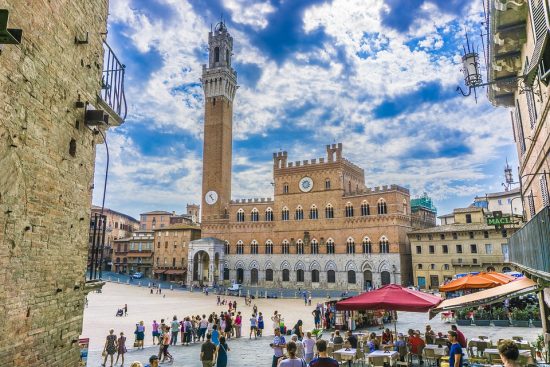
The building you see here is the city hall and the city tower next to it. These structures were built in the 14th century a.d. The color of the bricks and most of the buildings here is that orange- red brick color that Rick Steves describes as Crayola’s Burnt Sienna” crayon color. (When I first read that description, I recalled from childhood wondering what “burnt sienna” meant; now I know.). Within the city hall now is the Civic Museum, a small but worthwhile museum. There is also a gallery of paintings and frescoes within the tower.
The most famous structure in Siena is the cathedral. I think that this is one of the most beautiful churches in Italy.
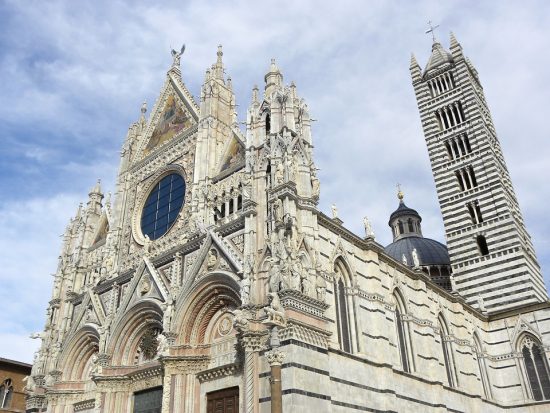
The church is enormous, consisting of many side chapels around the main part of the nave. Although the church is huge now, the original plans were for the church to be even larger than it is now. However, money constraints and a plague epidemic ended those plans.
Back at the Il Campo, one of my favorite places is the “Fountain of Joy”. The fountain looks more like a large pool, with water flowing out of the mouths of the stone wolves that sit right above the pool. Religious carvings are at the back of the fountain.

A few years ago, I had read about the Palio di Siena, the famous horse race that takes place in Siena on two different days in the summer, July 2 and August 16. This race is a competition between the seventeen contrade, or neighborhoods, within Siena. In this competition, a horse and rider from ten of the contrade, race around the Il Campo.
In preparation for the Palio, Il Campo is changed tremendously. The lovely sidewalk cafes are replaced with grandstands for viewing. In front of those stands, a dirt racetrack is put down, encircling the Il Campo.
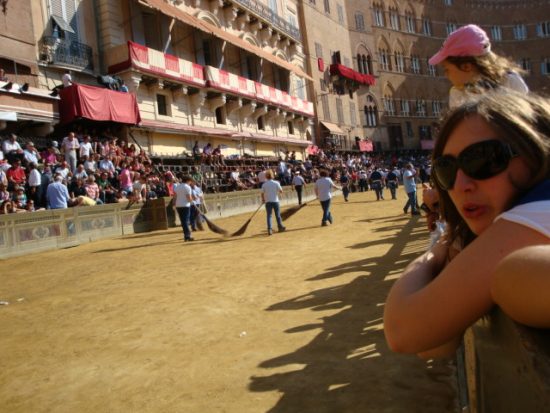
A drawing to select the ten contrade that will compete in the race has been done earlier. Those contrade select a horse and rider to represent them in the race. On the day of the race, both horse and rider are blessed by the priest of their neighborhood church. Then they proceed to the starting gate at the west side of the campo. When the signal is given to start the race, off they go, taking three laps around the track, for a total of about a mile.
There are no saddles on the horses; many times the rider falls off during the race, but if the horse finishes first, the contrada he represents has won the race. It doesn’t matter that there is not rider. It is a fantastic, wild few moments, climaxing weeks, days, hours of preparation.
I had the opportunity to witness this race a few years ago. It was probably one of the wildest events I had ever witnessed. I could not afford a seat in the bleachers, so I was one of the hundreds packed into a tight group in the center of the Campo. That center was separated from the racetrack by low wooden fencing.
Many of the horses, who are just ordinary horse, not race horses, did not want any part of the festivities. On the day that I went, the race had to be restarted several times due to errant horses: horses who wanted to leave, horses that bit other horses, riders thrown from their horse in that enclosed starting area. When the race did get underway, it lasted only a few moments, then the crowd went wild.
Siena, though, is more than the Cathedral and the Palio. It is a ancient town with many alleys and streets that beg to be explored. There is so much history here, not just in the museums, but in the many little cafes and shops, as well as the churches.
Siena is another of those magical Tuscan cities that is calling me back. I hope I will be able to write another blog post from the town when I am actually there.
So, until next time and a visit to another Italian city,
Ciao for now,
Dolly







